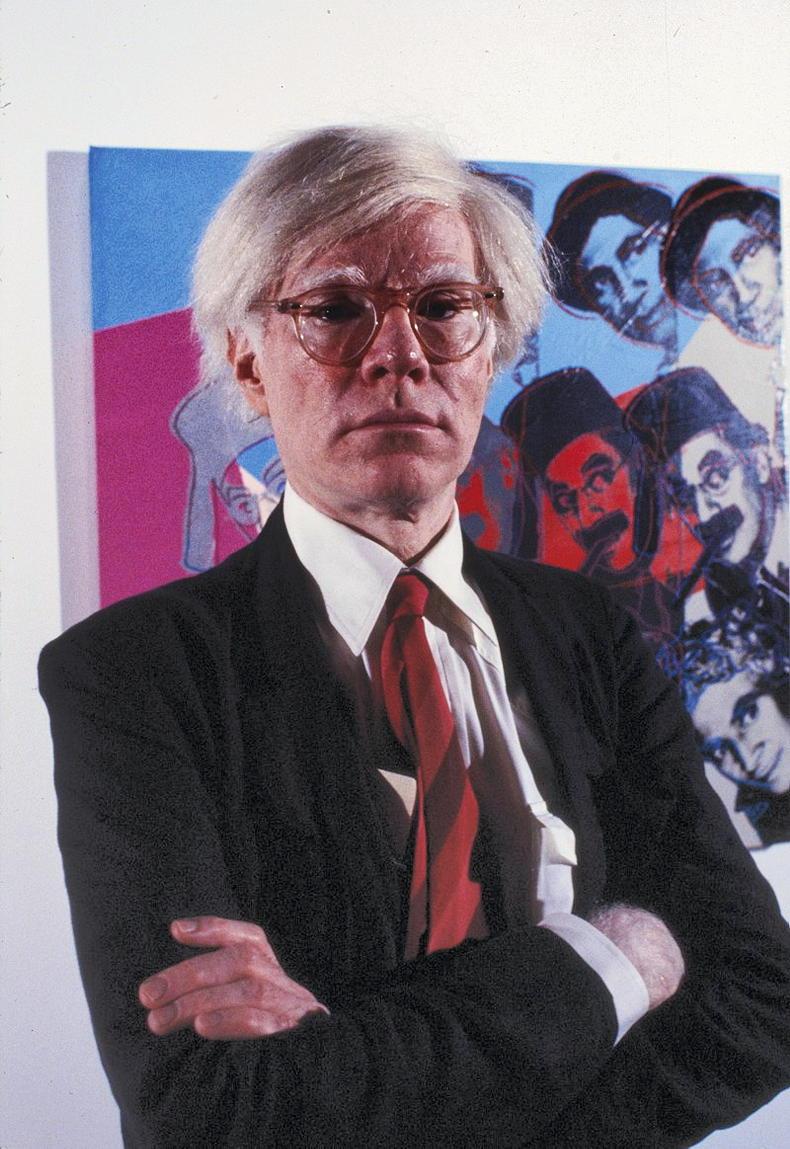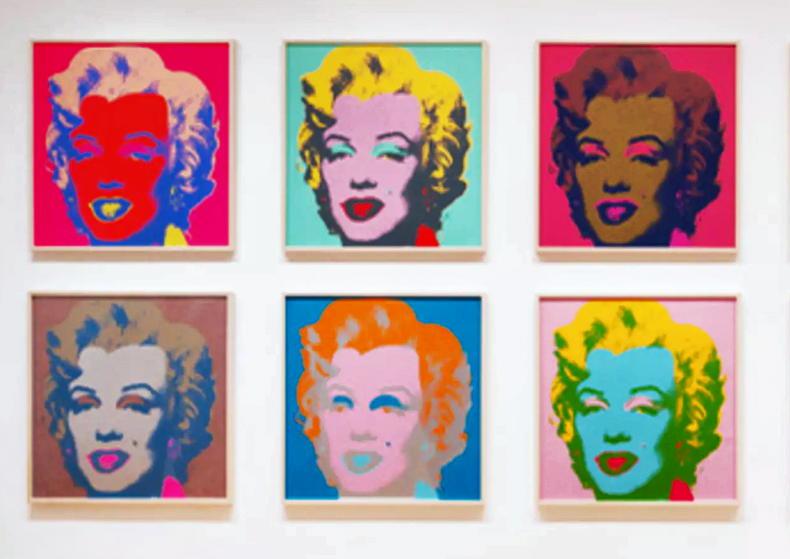Running until the end of January 2024, Three Times Out is one of the most important and exciting exhibitions to be held in Dublin, and I am not overstating it when I say that you have to find a time in your diary to go and see it.
Taking some five years to bring it to fruition, Barbara Dawson and her team at the Hugh Lane Gallery are to be commended for putting together some 250 works by the iconic Andy Warhol, a man whose influence on the contemporary art world and its history, is incalculable. Many have followed, but few, if indeed any, has had the impact Warhol did. It is noteworthy that his name is as much a household one today as it was at the height of his creative career.

Artist Andy Warhol.
What was it about Warhol that set him apart from all other practitioners at the time? The answer lies in what is one of his most important, and readily identifiable, works – Campbell’s Soup Cans. Who else could have dreamed of making art of a product that was in the cupboards of millions of American homes at the time, and turn this mass-produced item into an enduring icon?
It was not only the soup can that Warhol transformed into a work of art. He also used images of well-known figures, and ingrained them in the hearts and minds of generations; people like Marilyn Monroe, Jackie Kennedy, Elizabeth Taylor and China’s Chairman Mao. Warhol didn’t have to look too far for one of his most interesting figures, as he himself was featured on many occasions.
While many of the subjects of portrayal by Warhol have left us, and some of the products he featured have morphed into other brands, people who were not even born when the artist died in 1987 will still recognise them in the output of this genius. Just check out his images and works that feature brands such as Coke, Brillo, Heinz and Del Monte.
Such was the radical nature of Warhol’s work at the time he was setting out his stall in the early sixties, it was not an easy sell, and often garnered mixed reviews. Some questioned whether it could be called art, but Warhol was in no doubt about the veracity of his work. While he harboured hopes of becoming an artist, he started out his career working commercially in advertising, as a book illustrator, and even as a window dresser. This played a large part in developing his later career.
His studio in Manhattan, The Factory, was a magnet for artists, musicians, intellectuals, wealthy patrons and celebrities. Founded in 1963, it had four locations over the next quarter of a century, until his death at the age of 58. What also sets Warhol apart was his ability to excel in many areas of the arts. He managed the legendary rock band, The Velvet Underground, wrote a number of books, and founded the influential magazine Interview.
As we head towards half a century since his death, his popularity shows no sign of lessening. He is celebrated with the largest museum in America dedicated to a single artist, while his 1964 work, Shot Sage Blue Marilyn, sold last year for $195 million, the most ever paid for a single work of art by a US artist.
Given these levels of success, it is truly a once-in-a-lifetime opportunity for Irish art lovers to be able to see so much of his output in one place, and many of the works on show will later go back into private collections.
Tickets are €15 for adults. Book at hugelane.ie.
Read more
The Front Row: RHA shows the west is awake
The Front Row: a look at what is happening in the world of theatre for 2023
Running until the end of January 2024, Three Times Out is one of the most important and exciting exhibitions to be held in Dublin, and I am not overstating it when I say that you have to find a time in your diary to go and see it.
Taking some five years to bring it to fruition, Barbara Dawson and her team at the Hugh Lane Gallery are to be commended for putting together some 250 works by the iconic Andy Warhol, a man whose influence on the contemporary art world and its history, is incalculable. Many have followed, but few, if indeed any, has had the impact Warhol did. It is noteworthy that his name is as much a household one today as it was at the height of his creative career.

Artist Andy Warhol.
What was it about Warhol that set him apart from all other practitioners at the time? The answer lies in what is one of his most important, and readily identifiable, works – Campbell’s Soup Cans. Who else could have dreamed of making art of a product that was in the cupboards of millions of American homes at the time, and turn this mass-produced item into an enduring icon?
It was not only the soup can that Warhol transformed into a work of art. He also used images of well-known figures, and ingrained them in the hearts and minds of generations; people like Marilyn Monroe, Jackie Kennedy, Elizabeth Taylor and China’s Chairman Mao. Warhol didn’t have to look too far for one of his most interesting figures, as he himself was featured on many occasions.
While many of the subjects of portrayal by Warhol have left us, and some of the products he featured have morphed into other brands, people who were not even born when the artist died in 1987 will still recognise them in the output of this genius. Just check out his images and works that feature brands such as Coke, Brillo, Heinz and Del Monte.
Such was the radical nature of Warhol’s work at the time he was setting out his stall in the early sixties, it was not an easy sell, and often garnered mixed reviews. Some questioned whether it could be called art, but Warhol was in no doubt about the veracity of his work. While he harboured hopes of becoming an artist, he started out his career working commercially in advertising, as a book illustrator, and even as a window dresser. This played a large part in developing his later career.
His studio in Manhattan, The Factory, was a magnet for artists, musicians, intellectuals, wealthy patrons and celebrities. Founded in 1963, it had four locations over the next quarter of a century, until his death at the age of 58. What also sets Warhol apart was his ability to excel in many areas of the arts. He managed the legendary rock band, The Velvet Underground, wrote a number of books, and founded the influential magazine Interview.
As we head towards half a century since his death, his popularity shows no sign of lessening. He is celebrated with the largest museum in America dedicated to a single artist, while his 1964 work, Shot Sage Blue Marilyn, sold last year for $195 million, the most ever paid for a single work of art by a US artist.
Given these levels of success, it is truly a once-in-a-lifetime opportunity for Irish art lovers to be able to see so much of his output in one place, and many of the works on show will later go back into private collections.
Tickets are €15 for adults. Book at hugelane.ie.
Read more
The Front Row: RHA shows the west is awake
The Front Row: a look at what is happening in the world of theatre for 2023







 This is a subscriber-only article
This is a subscriber-only article










SHARING OPTIONS: